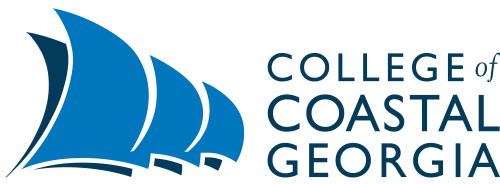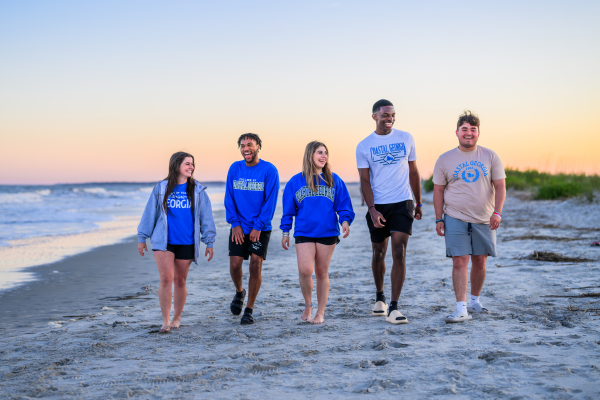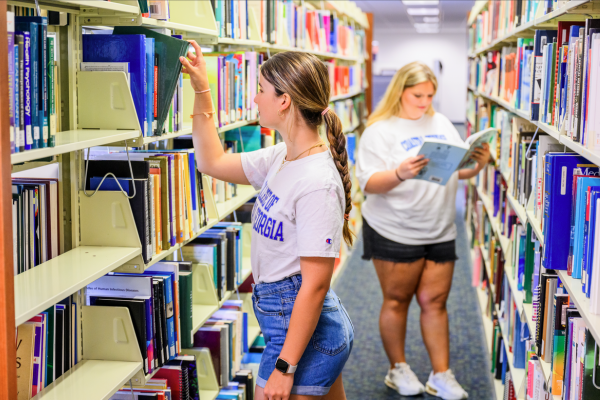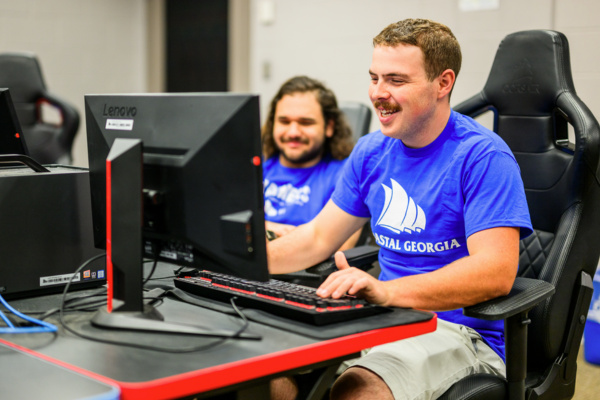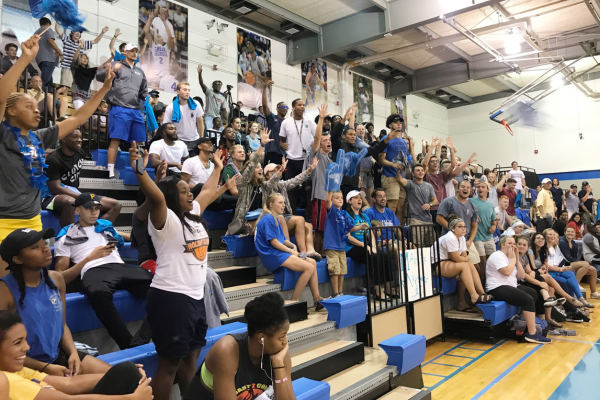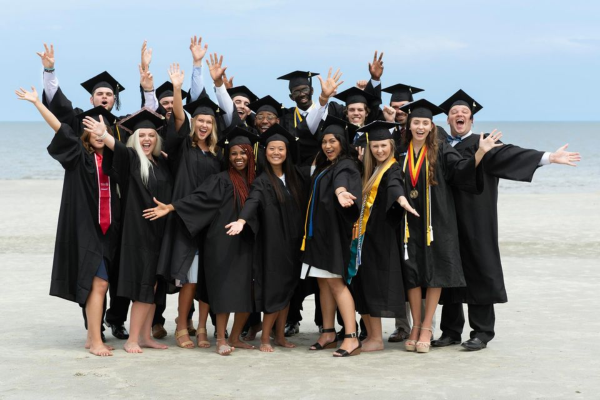New Math, New Experiences, and a New Outlook for the Future
By Tiffany King
Four College of Coastal Georgia students decided to spend their summer in pursuit of doing something that has never been done before in math—and they achieved it. Students Darius Hammond, Andrea Olvera, Jayla Maxwell, and Jose Cruz-Ramirez worked together to create new math. They focused on quantifying the number of zeros in a certain class of random polynomials, and found a class with more zeros. Their new learning experience was supported through the National Science Foundation via the Mathematical Association of America (MAA). The MAA encourages math faculty to apply to host a National Research Experience for Undergraduates Program (NREUP) at their institution. Assistant Professor of Mathematics Dr. Aaron Yeager and Associate Professor of Mathematics Dr. Syvillia Averett hosted the NREUP this summer at the College to engage underrepresented students in mathematics.
Yeager shared that the program not only serves as a great experience for students, but it’s also one that makes students feel like they belong in math, and to inspire others of similar backgrounds. Yeager and Averett applied for a grant to host the program, and students received a stipend of approximately $5,500 for related expenses, such as housing, food, and travel. Students earned college credit, and now have the opportunity to publish their research and submit it to be presented at undergraduate math conferences.
A polynomial is an expression consisting of variables, constants, and exponents that are combined using addition, subtraction, multiplication and division. Polynomial functions are used in many areas of math and science, such as statistics, data science, chemistry, physics, economics, and are often used to chart data. Yeager wanted students to focus on a certain class of random polynomials that no one else has explored before.
“We found that our class has more zeros than the traditional class that has been looked at,” he said. “The zeros of these polynomials are used to make approximations.”
The more zeros around a certain data point, the more accurate the data can be. Students found a way to make the math more precise.
The program lasted for eight weeks and finished with students polishing up their research paper on their findings. They learned how to professionally type math using LaTeX, a typesetting system designed to produce technical and scientific documentation, and how to present their research. Students worked in teams of two on separate parts of the math, then switched their findings with the other group to see how they derived at their results. The opportunity to be engaged in a new learning experience drew the students to the program.
Hammond, a junior majoring in data science and minoring in math and psychology, said he was intrigued by the research problem.
“I’ve always been interested in math,” he said, “but as I’ve been doing this research, it made me want to get more into it.”
Hammond aspires to work as a people analyst and help human resource departments with employee turnover.
Olvera views math as a puzzle worth solving. She had a hard time seeing a future career in math and thought participating in the program would be a great opportunity to see if it was something she wanted to do.
“This was going to be the deciding factor on if I was going to change my major or not. Originally, I was a nursing major. I like helping people, which is why it was hard to transition and see what I can do in this field and still help people. I learned that there are a lot of opportunities to do data science in the medical field, so I’m very excited,” Olvera said. She is now a junior majoring in data science.
Olvera also expressed her appreciation for her teammate Hammond, who taught her some new math skills while doing their research. She believes teamwork and practice can turn around anyone’s beliefs that they’re bad at math.
Maxwell is a senior majoring in biology. She was hesitant about participating because she felt that she wasn’t good at math. Her roommate, who previously took one of Averett’s classes, urged her to give it a try. Maxwell was also encouraged in learning that participants would be taught the necessary math skills for the project—so she said yes and is happy that she did.
“It’s a great learning opportunity,” she said. “I can also add this to my resume so that future employers can say, ‘She is more than general science. She can apply herself to other things outside her major.’”
Maxwell is considering a career as a genetic counselor or forensic scientist.
Cruz-Ramirez, a junior and pre-engineering major, liked the idea of doing something that no one has done before. He’s taken other classes previously with Yeager and felt comfortable in taking advantage of this opportunity.
“It’s challenging because it involves math that I haven’t taken yet, and I get to see how it works,” he said. “I’m going to be dealing with equations similar to this in my engineering classes.”
His current plans are to enroll in a technical college and become a civil engineer.
Yeager is really excited about the students’ results. He’s been working in the field of random polynomials for eight years, reviews academic journals, and has not seen anyone explore this area of polynomials. He plans to submit their research to different undergraduate math conferences, such as the Young Mathematicians Conference hosted by The Ohio State University, and the Eagle Undergraduate Mathematics Conference at Georgia Southern University. Although the NREUP grant needs to be applied for every year, Yeager hopes to keep this math research opportunity available for future students.
Recently, the students presented their findings to faculty, staff, students, and alumni of the College. They took advantage of the opportunity to practice their speaking skills and answered questions about their research experience. Each student expressed their appreciation for the program, sharing how much their self-confidence in math has grown.
